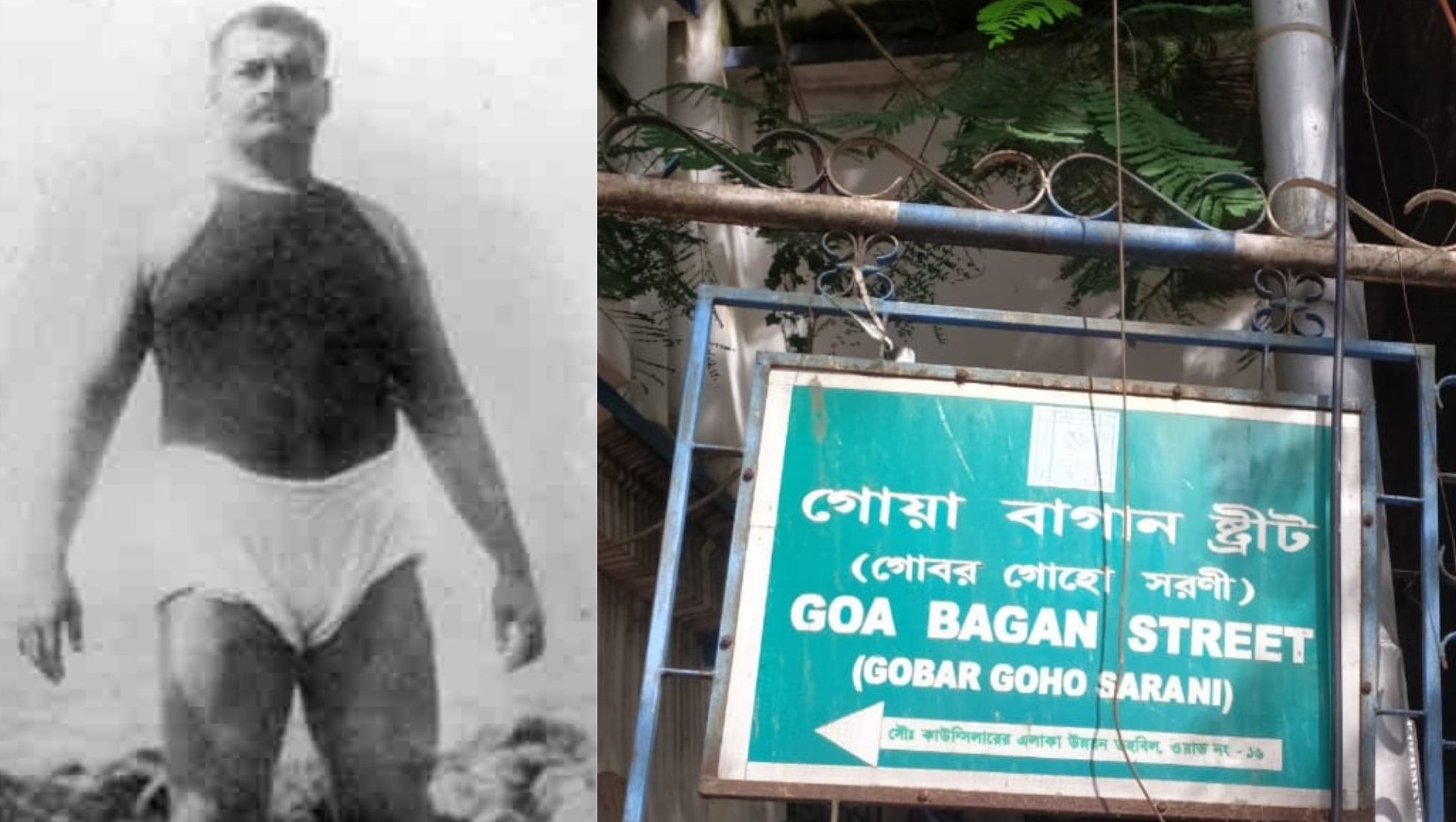Bengalis are often dubbed as lazy, who are more known for their brains than their brawn. So, it comes as a shock when we hear that a Bengali once ruled the Wrestling world. He was Jatindra Charan Guho, aka, Gobar Goho.
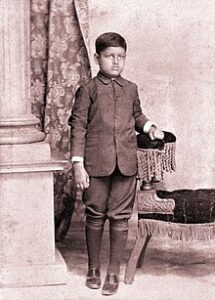
It was the day of Doljatra (Holi) – 13th of March, 1892- when Ramcharan Goho and his wife were blessed with a son. The baby’s dark complexion, coupled with his weird features were the main reasons why Ramcharan nicknamed him Gobar, the Bengali meaning of cow dung. He also wanted his son to have an intrinsic connection to the family sport of Wrestling and the place where it is played – the Akhda. In India, cow dung is one of the essential ingredients to create a perfect Akhda.
The Goho Family
The Guho’s were a family of wrestlers. In pre-independent India, the Britishers could not pronounce Guho, and thus anglicised it to Goho. Gobar Goho’s grandfather Ambikacharan Goho was the first wrestler in their family, who passionately nurtured the ‘Culture of Wrestling’ in his heirs. He spent a mammoth amount of time and money behind it. Their family Akhda at 65 Masjidbari Street in erstwhile Kolkata became a well-established breeding ground for regional and national wrestlers. Ambikacharan became such an accomplished wrestler that he was referred to as Rajababu within the Wrestling community.
Among Ambikacharan’s son, Khetracharan Goho or Khetubabu took the Goho name forward in Wrestling. It was he who acted as a guiding light for Gobar Goho. Gobar was heavily built from his childhood and at the age of nine he picked up the sport after his father’s death. A natural Palowan, Goho became a proper wrestler by the age of 15 under the guidance of his uncle. But to provide further training, Khetracharan brought the great Rahman Ustad from Amritsar and later Gurta Singh to train his nephew.
Gobar Goho- The Visionary
One of the anecdotes about Gobor Goho says that he could easily go on Wrestling for 5-6 hours at a stretch, and not show any signs of slowing down. At 18 years old, Goho stood 6 feet and 2 inches tall and weighed around 130 kg. His massive chest measured a whopping 48 inches.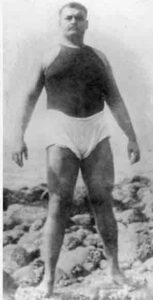
All these were taking place at a time when Bengal was one of the frontrunners of the independence movement against the British. A lot of the Akhadas became fronts for the underground network of armed revolutionaries. Thus Wrestling was in a deteriorating state in Bengal. But Goho, who had a love for Wrestling as an art, had a futuristic vision that turned around the trajectory of his life, and possibly that of Indian Wrestling.
Gobar Goho took a trip to Lahore to watch the much-hyped encounter between two of the contemporary wrestling greats – The Great Gama and Rahim Sultaniwala. It was at that time, watching their fight, when the young Goho first pondered the possibility of taking Indian wrestlers to fight in London. It was the heart of the British Empire where the Indian wrestlers could prove their merit.
The idea was a costly affair but Goho was instantly helped by some rich businessmen. Thus in 1910, a talented troupe of wrestlers- the Great Gama, his brother Imam Baksh, Ahmed Baksh and Gamu traveled to England. Goho, who also travelled with them, unfortunately had to return home on account of his mother’s ill health. However, Gama and his team continued Wrestling for several months and finally emerged victorious. Despite it being Gama and his team’s victory, it was Goho’s vision that made this historic trip a reality.
Gobar Goho- The Master Wrestler
Once things settled down at home, Gobar Goho went on multiple trips to different countries in the following years. On a tour in 1913, Goho took down several big names, which included the likes of Jimmy Campbell and Jimmy Essen. However, the fight that turned Gobar Goho into a world champion came in 1921. That year, Goho became part of Wrestling folklore after he defeated the German-American Wrestling great, Adolf Santel, to pick up the light-heavyweight championship of the world.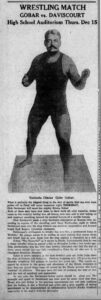
At the time Wrestling matches did not have the time limits of today and in a bout that lasted for about an hour and 3 minutes, Goho claimed victory. The San Francisco Chronicle dubbed him as the Hindu Giant. That same year the Kansas City Post posted an article, with the heading – Invasion of ‘Hindu Menace’ breeds fear among matmen.
Goho’s strength put the American fighters in panic and the press raised to the occasion. The American newspapers claimed that Gobar Goho ingested gold powder to gain incredible power. Things became so bad that a young American Wrestling expert, Lori Pratt, had to come out in favour of Goho. Pratt’s statement read,
“Gobar is not a hoax. Not just a game of gold powder. His real strength is in controlling his breath. What’s going on in the papers about Gobar Goho is horrible in one word. And there is only one reason – the man is very humble. Pictures of his gorgeous dress are appearing on paper, his winning habits are being written, his daily diet is talking about gold and silver powder, and there is a weight of exercise with a heavy stone around his neck. But the dung man is actually like a shy vine. I want to write about this dung.”
Goho spent around six years in the US, and went up against the best wrestlers in the world. Some famous names included Ed ‘Strangler’ Lewis, Stanislaus Zbyszko, Adolf Santel and John Lemm. Goho, who was famous for his radda style, developed some very different styles like dhonka, tibbi, dhak, tang, pat, kulla etc. that were later inducted in Indian Wrestling. Goho returned home in 1927 and took over the reins of the family Akhda. In 1936, that Akhda at Masjidbari Street was shifted to Goabagan Street, one of the busiest lanes of north Calcutta.
Gobar Goho- The Forgotten Calcuttan
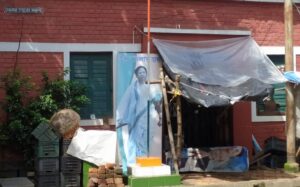
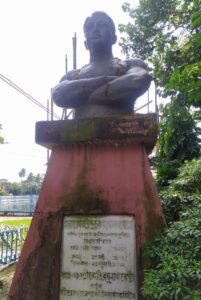
Unfortunately, the name of Gobar Goho has been all but forgotten in the memory of the Calcuttans. As Sportsavour took a trip to Goabagan Lane, ‘we’ found that Gobar Goho’s gymnasium still stands but there are no bouts of Wrestling held there anymore. The activity has decreased even further since the COVID-19 lockdown was enforced. The gates of the once-famous Akhda are being ‘strongly’ guarded by the ‘colours’ of a certain political party.
Although the neighborhood does know where the gymnasium is located, hardly anyone knows about his residence or if it even exists in the present day. His statue was installed at Azad Hind Bagh in 1996 but today it stands in a depleted condition.
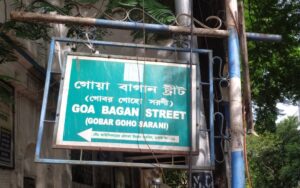
In 1972, Goho breathed his last, surrounded by his family and his students in his beloved Akhda. As we are nearing the 50th death anniversary of the incredible Gobar Goho, we find that the Indian Prince from Calcutta is only remembered by the rechristening of the Goabagan Street as Gobar Goho Sarani.
The ‘City of Joy’ is perhaps running out of space to remember the ‘Great Goho’.

